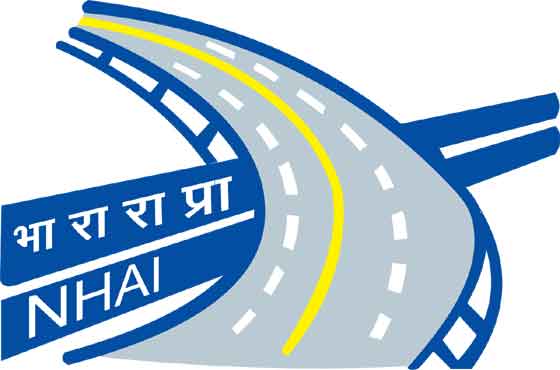In a bold and transformative step, the National Highways Authority of India (NHAI) has unveiled plans to build 6,376 kilometers of highway infrastructure in the financial year 2025–26, with a massive ₹3.4 lakh crore investment. These 124 ambitious road and expressway projects will reshape India’s national transport corridors, boosting economic activity and connectivity across multiple states.
Massive Investment Blueprint Unveiled by NHAI
The ₹3.4 lakh crore investment earmarked by NHAI is one of the largest infrastructure undertakings in Indian history. The organization, operating under the Ministry of Road Transport and Highways, plans to initiate the tendering process for 124 road projects, spanning diverse terrains and regions, ensuring seamless interstate travel and improved last-mile connectivity.
This strategic move is aligned with the central government’s vision of reducing logistics costs, enhancing the ease of doing business, and developing world-class infrastructure to compete with global standards.
Highways to be Developed Under Hybrid and Traditional Models
NHAI has strategically planned the rollout using a mix of construction models tailored to region-specific requirements:
Hybrid Annuity Model (HAM): Gorakhpur–Kishanganj–Siliguri Corridor
A key highlight is the 476-kilometer-long corridor connecting Gorakhpur in Uttar Pradesh to Kishanganj in Bihar, extending further to Siliguri in West Bengal. This crucial highway will be developed under the Hybrid Annuity Model (HAM), which balances government and private sector participation. This corridor is critical for Northeast connectivity, offering a robust trade link to the Siliguri corridor — India’s strategic gateway to the Northeast and neighboring countries.
Build-Operate-Transfer (BOT): Ahmedabad via Tharad, Deesa, Mehsana
Another marquee project is the 106-kilometer highway route leading to Ahmedabad through Tharad, Deesa, and Mehsana in Gujarat. Developed under the Build-Operate-Transfer (BOT) model, this project entrusts private developers with construction, operation, and maintenance, incentivizing them with toll revenue generation. It will significantly ease traffic congestion and boost commercial transport in Gujarat’s thriving industrial zones.
Engineering Procurement and Construction (EPC): NH-44 Upgrade in J&K
The Engineering Procurement and Construction (EPC) model will be employed to upgrade the 48-kilometer stretch of National Highway-44 from Pampore (Srinagar) to Qazigund (Jammu and Kashmir). The scope includes the addition of service roads, grade-separated flyovers, and modern structures to elevate road safety and traffic efficiency in the strategically sensitive region of Kashmir. This highway is a lifeline connecting the Kashmir Valley to the rest of India and plays a crucial role in defense and civilian logistics.
Breakdown of Project Highlights by Region
Northern and Northeastern Corridors
Uttar Pradesh-Bihar-West Bengal: The Gorakhpur-Kishanganj-Siliguri corridor will create critical East–North-East connectivity, allowing smoother access to remote regions and improving defense logistics near the international borders.
Jammu and Kashmir: Upgrading NH-44 will reduce travel time, enhance tourism access, and strengthen supply chain resilience in the valley.
Western Region Focus: Gujarat and Rajasthan
Gujarat: The Tharad–Deesa–Mehsana–Ahmedabad stretch will become a major freight and logistics artery, connecting hinterland manufacturing hubs with major ports like Kandla and Mundra.
Rajasthan: Multiple new projects under this package aim to reduce bottlenecks in the state’s vast desert terrain, promoting desert tourism and improving access to tribal regions.
Southern India
Several upcoming tenders are planned for Tamil Nadu, Andhra Pradesh, Karnataka, and Telangana, with a focus on industrial corridors, port connectivity, and high-speed linkages between tier-1 and tier-2 cities.
Strategic Benefits of the ₹3.4 Lakh Crore Investment
Boost to National Logistics Efficiency
India’s logistics costs currently account for nearly 13–14% of GDP, significantly higher than global standards. These new highways aim to reduce transit time, lower fuel consumption, and streamline freight movement, contributing to more competitive pricing for goods.
Massive Employment Generation
With 124 large-scale infrastructure projects, millions of direct and indirect jobs will be created in sectors including construction, engineering, surveying, project management, and logistics. Local economies along the highway routes will witness a sharp economic upturn due to better access and mobility.
Modernization of National Highway Network
This mega project will significantly upgrade India’s highway infrastructure, incorporating smart traffic systems, digitally enabled tolling, environmental safeguards, and roadside amenities. The network will meet international specifications and safety benchmarks.
Environmental and Technological Considerations
NHAI has emphasized the integration of sustainability and innovation into these projects. Each tender will mandate:
Green construction practices, including the use of recycled materials and dust control measures.
Installation of solar lighting, rainwater harvesting, and eco-sensitive landscaping.
Deployment of Intelligent Transport Systems (ITS) for real-time traffic management, emergency response coordination, and monitoring.
Technological enhancements will also include drones for project monitoring, AI-based traffic pattern analysis, and GIS-based land acquisition tracking.
Timeline and Execution Strategy
The entire process of issuing tenders, awarding contracts, and initiating groundwork will be carried out throughout FY 2025–26. Execution is expected to follow fast-track timelines, with priority corridors receiving accelerated clearances under the Bharatmala and Gati Shakti initiatives.
NHAI has announced that a central project monitoring dashboard will track progress transparently and in real-time, ensuring strict adherence to deadlines, cost benchmarks, and quality controls.
Alignment with India’s Vision 2047 Infrastructure Goals
These 124 projects fall under India’s broader ambition to become a $5 trillion economy and a global infrastructure leader by 2047. With such capital-intensive and strategically designed highways, India is positioning itself to:
Enhance interstate trade corridors
Enable multimodal transport linkages with rail and inland waterways
Promote border-area development with swift troop and goods movement
Improve urban–rural connectivity and bridge regional disparities
Key Takeaways and Outlook
124 projects, spanning 6,376 kilometers, have been greenlit with a ₹3.4 lakh crore allocation.
Construction will be carried out under HAM, BOT, and EPC models, targeting optimized financial and operational outcomes.
Focus areas include Gorakhpur–Siliguri corridor, Ahmedabad connectivity, and J&K’s NH-44 upgrades.
The initiative supports the goals of lowering logistics costs, generating employment, and building next-generation infrastructure.
It aligns with India’s grand vision of transformative, sustainable, and world-class transport development.
As India marches towards becoming a global infrastructure powerhouse, this move by NHAI marks a defining milestone. The planned highways are not just roads—they’re arteries of growth, set to accelerate economic expansion, boost interconnectivity, and modernize national transportation for decades to come.















